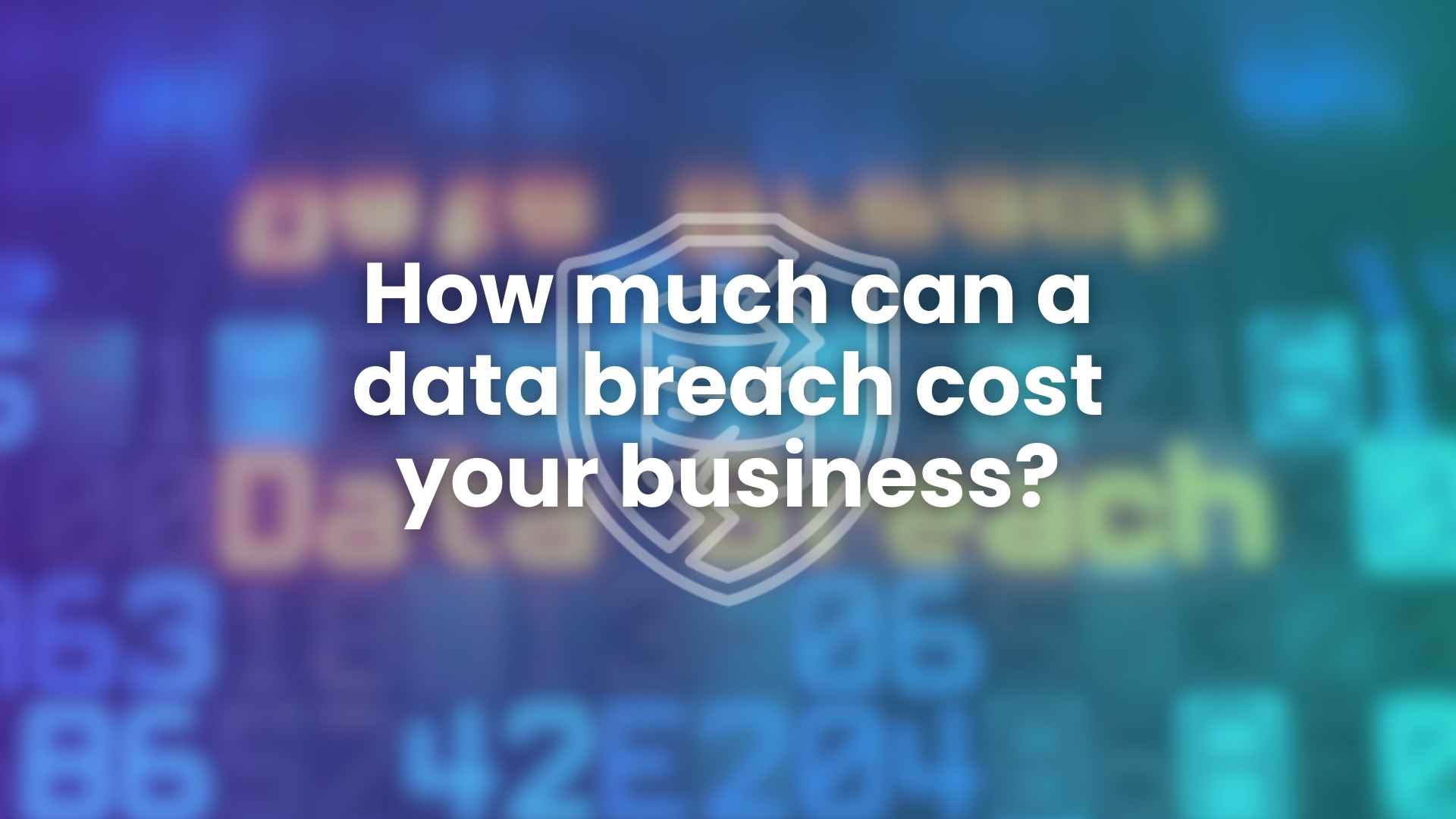Cybercrime has become a critical concern for businesses of all sizes in today’s interconnected world. Data breaches, which involve the unauthorized access, acquisition, or disclosure of sensitive information, pose a significant threat to companies. These breaches can have severe consequences, ranging from immediate financial losses to long-term impacts on a company’s reputation and competitive advantage.
According to the IBM 2023 cost breach report, the average cost of a data breach for businesses worldwide reached $4.45 million in 2023. Safeguarding sensitive information has become a top priority to protect against the escalating cost and devastating consequences of cybercrime.
Counting the Costs:
The Hidden Toll of Cybersecurity Breaches
Cybersecurity breaches carry substantial costs, both in the short term and in the long run.
Immediate financial challenges include expenses like incident response, legal fees, and regulatory fines. However, the aftermath of a breach has effects that extend beyond the immediate expenses.
Indeed, indirect costs associated with breaches are often underestimated but can be significant. These include the loss of customers due to damaged trust, decreased competitive advantage, and the need to invest in rebuilding the business reputation. The long-term impact of breaches on businesses is undeniable, making it crucial to accurately assess and understand the true cost of a breach.
Cracking the Code:
FAIR Methodology and Dollars Behind Cyber Risk
The FAIR standard, which stands for Factor Analysis of Information Risk, offers a taxonomy and methodology for cyber risk analysis in all business functions. It provides a framework that establishes a vital link between cybersecurity experts, business managers, and general management through financially quantified risk scenarios.
By breaking down risk into distinct measurable factors and utilizing statistics and probabilities, the FAIR standard allows for the quantitative estimation of risk. It helps organizations analyze complex risks, identify key data for quantification, and understand the interdependencies between risk factors.
With 45% of Fortune 1000 companies already utilizing the FAIR methodology, it has become the international standard for quantitative information security and operational risk analysis. Implementing FAIR enables organizations to accurately calculate and assess risks, empowering them to make well-informed decisions.

By adopting the FAIR framework, decisions-makers will be able to effectively address crucial questions that help shape their risk management strategies:
- What is the likelihood of a disaster occurring within a specific time?
- What would be the financial impact of such a disaster?
- What are the primary cyber risks that the organization faces?
- Which assets are most vulnerable and require prioritized protection?
- How much should be invested to effectively mitigate these risks?
Quantifying Risk:
Delving into FAIR for Breach Cost Estimation
Precisely, the FAIR framework consists of two main components: Loss Event Frequency (LEF) and Loss Magnitude (LM). Let’s break down each component and its sub-components.
1. Loss Event Frequency
The Loss Event Frequency calculates the likelihood of a loss event occurring within a specific timeframe.
It consists of two factors: Threat Event Frequency and Vulnerability.
- Threat Event Frequency (TEF) refers to the number of times a threat or risk is expected to occur. It helps quantify how often a specific threat may manifest itself. To estimate TEF accurately, two subcomponents are considered:
- Contact Frequency (CF) measures how frequently an asset comes into contact with a threat.
- Probability of Action (PoA) assesses the likelihood that a threat will take action against an asset upon contact.
- Vulnerabilities (Vul) focus on the probability that a threat will lead to a loss event. It considers the weaknesses or vulnerabilities in systems, processes, or controls that could be exploited. Two subcomponents play a role in estimating vulnerabilities:
- Threat Capability (TCap) measures the level of force a threat can apply against an asset based on its skills and available resources.
- Resistance Strength (RS) evaluates an asset’s ability to resist a threat’s attempts to compromise it.
2. Loss Magnitude
The Loss Magnitude focuses on the factors that drive the magnitude of losses when threat events occur.
It consists of two components:
- Primary Loss (PL) represents the direct loss incurred by the primary stakeholder due to a threat event. It includes immediate financial impacts resulting from the event.
- Secondary Loss (SL) refers to the losses incurred by the primary stakeholder due to negative reactions from secondary stakeholders. It includes reputational damage, legal liabilities, or other indirect consequences.

Beyond the Break:
Safeguarding Reputation & Finances
Preventing breaches through robust cybersecurity measures is crucial for businesses. The frequency and cost of breaches continue to rise, making it essential for organizations to prioritize proactive security measures.
Beyond financial loss, breaches can have severe consequences for a company’s reputation and customer trust. As more businesses rely on digital systems and store vast amounts of sensitive information, the stakes are higher than ever.
AI and automation technologies offer significant savings and enhanced breach identification and containment capabilities.
For instance, in the 2023 IBM global survey on Data Breach Costs, it was discovered that extensively utilizing artificial intelligence (AI) and automation brought significant benefits to companies. By doing so, organizations managed to save almost USD 1.8 million in data breach expenses. Additionally, the implementation of these technologies led to a reduction of over 100 days, on average, in the time it took to identify and control data breaches.
—
Conclusion
Understanding the true cost of a breach and its potential impact on a business is significant in today’s cybersecurity landscape. The FAIR methodology provides organizations with a structured approach to calculate the financial implications of breaches accurately.
Investing in robust cybersecurity measures is not just a financial decision but a crucial aspect of protecting a company’s reputation, customer trust, and competitive advantage. As cyber threats continue to evolve, businesses must maintain continuous vigilance, adapt their security strategies, and leverage emerging technologies to stay ahead of potential breaches.
By embracing the FAIR methodology and adopting comprehensive security measures, businesses can mitigate the risks of breaches, safeguard their operations, and install confidence with their stakeholders.
by Martin Gilg
